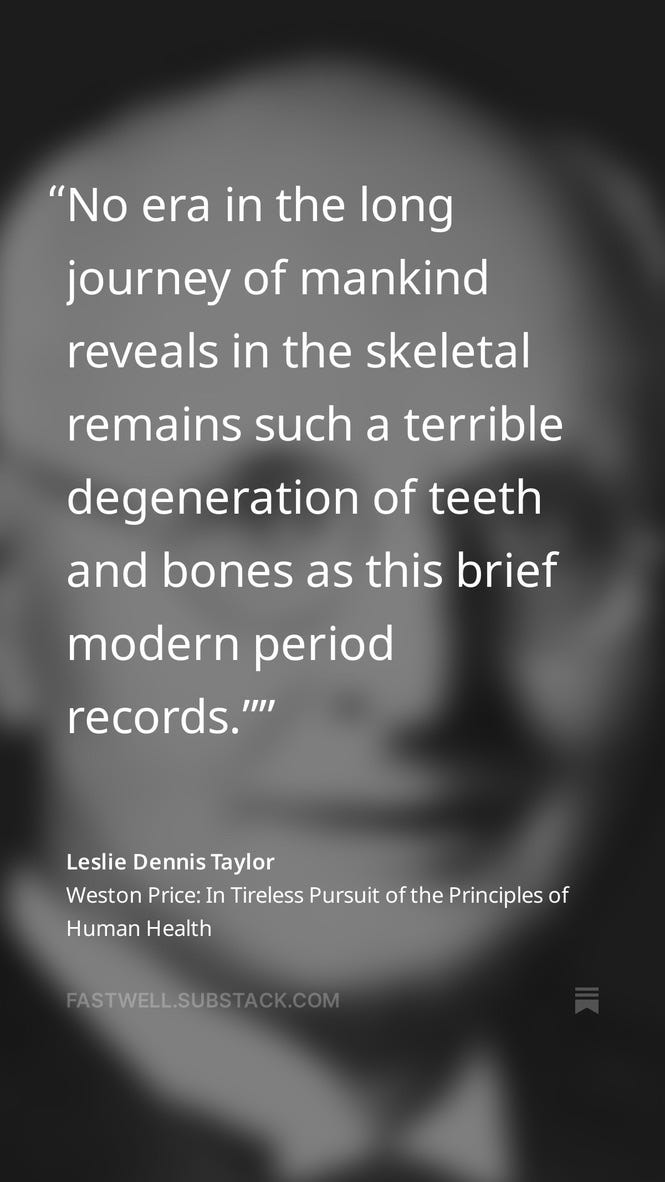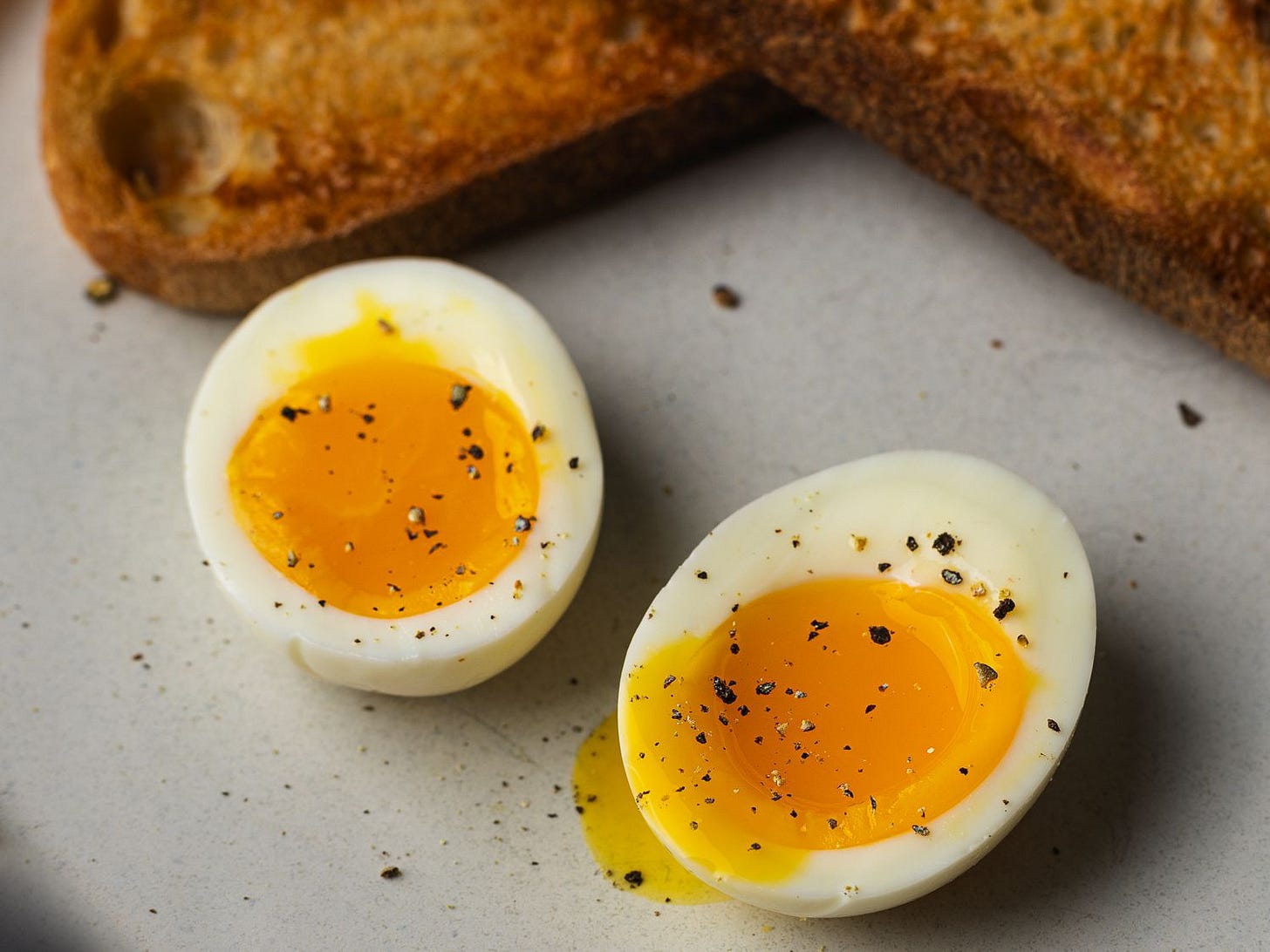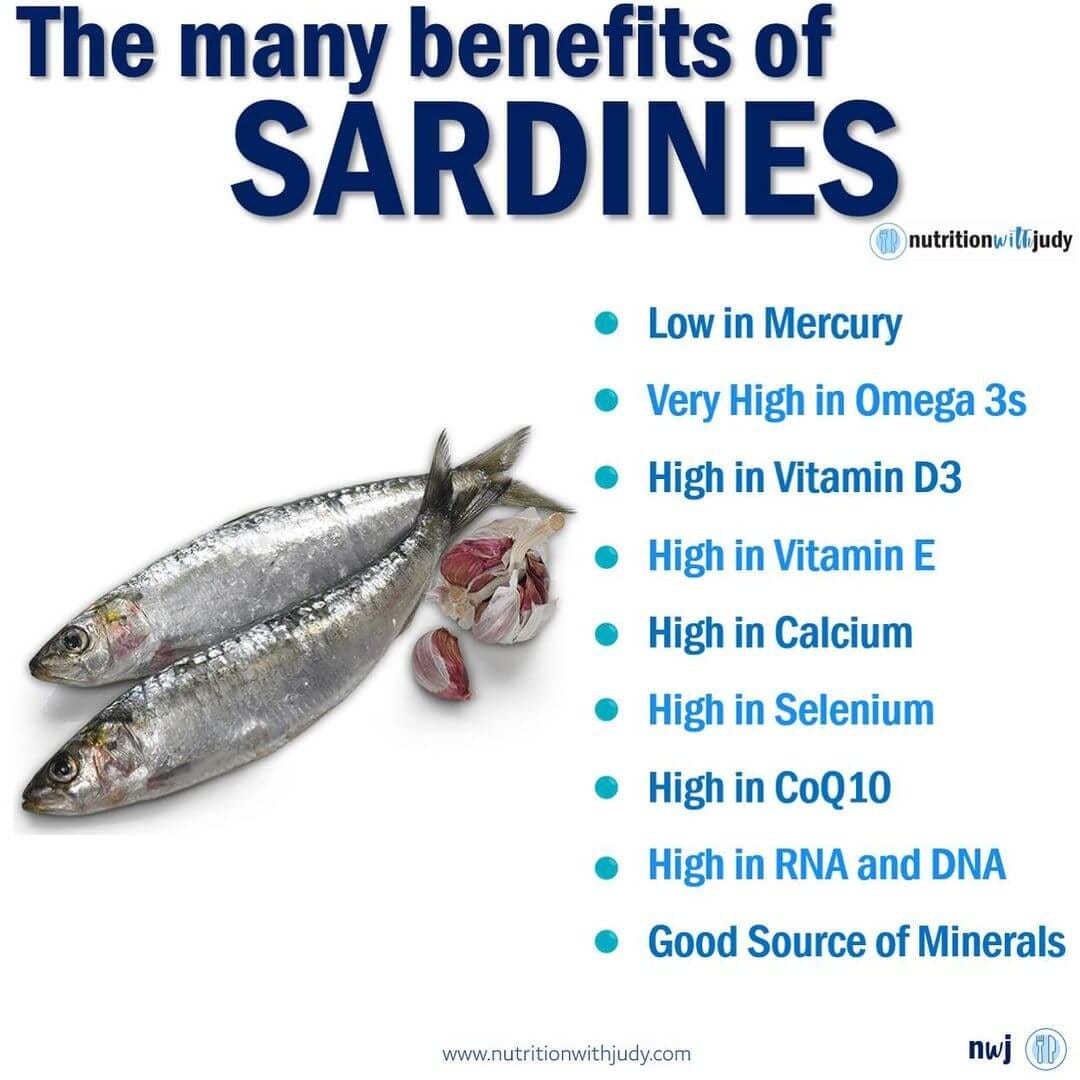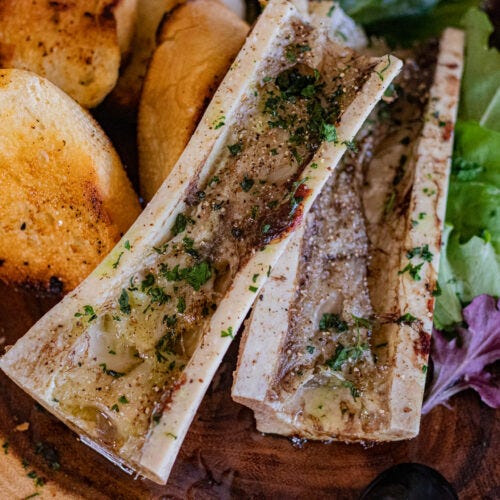What I Eat in a Day: My Sample Menu
One of the most common questions I get asked is: What do you eat? People need health advice to be made practical. They need to know what to eat. I'm here for you. Here's what I eat most days.
I can’t believe I waited so long to write this post.
However, I think that about nearly every post I write. Today, as I browsed the 81 post drafts I have in my Substack drafts folder, nearly all of them seemed important, urgent even. But I’m choosing this one for today because it’s what people often ask me about.
Because the glut of health info feels overwhelming to many, one of the goals of this stack is to make health info easy and actionable. What’s more actionable than a sample menu?
But before I give you my favorite foods list, I want to set the stage for why I eat what I eat. I think many of you will be surprised at how strategically I eat.
I take seriously what I write about. I am the guinea pig, the one living out everything I teach. My eating habits are ground zero. Everything happens here first. There is not a single diet that I recommend to coaching clients that I haven’t done myself for a decent length of time. (The GAPS diet was our family’s most recent adventure, and I have so much to say about its benefits in future.)
Here’s a super brief overview of my health history for new readers: I began my health journey and this stack by being intrigued with all the health benefits that come from intermittent fasting because it heals insulin resistance and metabolic function, the root of most chronic diseases. These evil twins have been thrust into the limelight recently through the work of Dr. Benjamin Bikman who wrote Why We Get Sick and now Casey Means who wrote Good Energy.
But I wasn’t content to stay there. I wanted to learn about healthy food, vitamins, and minerals as well. And this is where going back to the 1930s and examining the field notes of Weston Price’s meticulous nutrition research rocked my world.
Next, I learned that Chris Masterjohn confirmed all of Price’s work using more up-to-date vitamin and mineral analysis during his post-doc research at the University of Illinois. Masterjohn published his findings in academic journals and also on the Weston A. Price Foundation website in a series of articles that the average person can easily read and understand.
I’ll summarize Price and Masterjohn’s research in two sentences. The fat-soluble vitamins A, D, and K2 and the fatty acids found only in animal foods form the foundation of human health, bone and teeth development, healthy brain formation, fertility, immunity to disease, and human flourishing. Therefore, humans need nutrient-dense animal foods to thrive.
After examining the changes in skeletons over several generations, Price wrote:
These findings caused a Copernican revolution for me, and I haven’t yet recovered. When I read Price’s work, I changed how I thought of food. It’s not in my nature to read something and then shrug and return to eating Dunkin’ Donuts. Once I know something, I can’t un-know it. I’m going to live it.
I immediately started putting into practice every last thing I read in Price’s research. Everyone in my family was given cod liver oil tablets (I prefer the brand that was inspired by Price’s research because removing the oil from the liver via fermentation preserves more of the vitamin D). I had my vitamin D level tested, and it was atrociously low at 24.4. After 6 months of Weston Price food it went up to 69.2. Last winter, I had the first winter in my life where I had not a single cold or flu virus or any illness (as I explain in this post). This was after having more flus and colds than anyone I knew.
I began filling the freezer with beef liver, grinding it, and adding it to meals with ground beef. Meat stocks and gravies made from bone broths abounded. The fridge was stocked with raw milk and local pastured eggs. In short, everything changed around here when it came to food.
And then I noticed something very interesting: my dog and cat went wild for the new foods I was cooking. They savored my leftover beef liver scraps as though they had never eaten something so scrumptious in all their lives. They went berserk each time I opened a can of smoked oysters (one of the most nutrient-dense foods, by the way, and particularly high in B12 and zinc. Note: some anemia is caused by B12 deficiency. This is called pernicious anemia).
I wondered: Why do my dog and cat have food instincts for what’s nutritious which most humans have completely lost? Remember, the human digestive tract closely resembles that of a dog which is a flexible carnivore, with a digestive system designed to obtain most of its nutrients from animal foods but can tolerate some plant foods. This is as opposed to an obligate carnivore like a cat which thrives exclusively on animal foods, or an herbivore that has a digestive tract with trillions of microbes that ferment the indigestible cellulose in plant matter and transform it into fatty acids and amino acids (a cow with its four stomachs).

This means that if our food instincts were working well, we would all behave like my dog—jumping for joy when smelling roasted meat and rich broths, savoring raw dairy products, drooling over runny egg yolks, running in circles for bacon, craving meat over carbs.
So I wondered: Could I train my tastes to prefer the foods that truly nourish me? Obviously, there was something broken in my taste buds when I used to crave carbs and sweets more than anything. I wanted to know: Is it possible to make myself love the right foods like my dog and cat naturally do? Could I develop the right instincts for what is nourishing? How long would it take?
In short, could I change myself so that what I was supposed to eat became what I wanted to eat?
To answer this question, my aim every day when I sit down to eat is to seek out the most nourishing foods possible. And that’s what I choose to eat.
(Note: Since I’m at my goal weight, I practice 16:8 fasting most days, although some days I do 18:6. This means I’m eating two meals most days.)
LUNCH
My first meal is between noon and 1 pm. Here is what I eat nearly every day for lunch; something from each of these categories.
Four Egg Yolks
I often avoid the whites because it’s hard to eat four whole eggs without getting full. Sometimes I soft boil the eggs and then scoop the yolks out. This is delicious. At other times I carefully slip the four yolks into a saucepan with gently simmering heavy cream and cook until soft.
Today I sauteed my four yolks in bacon grease because I had some in the frying pan from making the family bacon for breakfast hours earlier.
Egg yolks are the ultimate multivitamin. They are jam-packed with choline (which prevents fatty liver disease among other things), B vitamins such as folate (but only if they’re farm-raised), vitamin A, biotin, and nearly every necessary vitamin and mineral.
Some kind of meat. This varies between:
Smoked salmon about once a week. I’d love to eat it every day but it’s cost prohibitive.
Smoked oysters from a can
Canned sardines in mustard sauce
Beef liver: yes, I eat it plain. I throw it in a frying pan and saute it with butter and onions.
Leftover meat from dinner.
Today, I ate some bone marrow for lunch because I roasted marrow bones in the oven and am, at this very moment, simmering bones for broth I’ll use in a beef stew we’ll have tomorrow night.
Raw milk or homemade kefir made with raw milk and unsweetened. Sometimes, I’ll have plain (unsweetened) full-fat organic yogurt, sometimes homemade sometimes store-bought. High quality dairy from grass fed animals is central to human nutrition.
Kefir is the mother of all probiotics, and is one of the most powerful modulators of the gut microbiome. In this clinical trial, participants with Crohn’s disease and irritable bowel syndrome saw significant improvement while taking kefir for just 4 weeks as compared to the control group.
I avoid anything sweet at this meal and have no carbs.
It’s important to note that I never think about limiting calories. Thinking you have to limit calories is a pitfall that many people have difficulty overcoming. You’ll notice that all the foods above are dense and rich. People forget that when you nourish your body with protein and healthy animal fats, your body tells you exactly when to stop. I’m now used to putting small portions on my plate because I get full so quickly. For example, I’ve learned to enjoy the taste of beef liver but it’s so nutrient-dense that I get full after about two ounces.
DINNER
We try to eat about 5 to 5:30 every night. This is earlier than most people but this is by design.
Dinner consists of:
Some kind of meat. Roasted or grilled chicken thighs, steak, burgers with ground liver added, fish, shrimp, shredded pot roast, pork chops, pulled pork, etc.
Roasted vegetables
Salad. I adore salad. Here are two posts for salad inspiration (Your Salad Repair Manual and Tried and True Salad Recipes Plus My Universal Salad Recipe).
Sometimes when we crave something sweet, our body is just asking for vitamin C. My salads tend to be slightly sweet with berries and a fruity white balsamic vinegar mixed with olive oil for the dressing so I often eat this at the end of the meal. It’s like a dessert only so much better.
Some carbs on the side for the active growing kids such as rice or potatoes. Sometimes there is homemade sourdough bread made with organic flour (trying my best to avoid glyphosate). I usually pass the carbs up or have only a small amount, not because I have so much willpower, but because I’m so satisfied with my other foods that I just don’t need them.
Raw dairy or homemade kefir (unsweetened).
I make gravy often because my family is not keen on drinking a mug of bone broth like I am (although they will if they’re sick). Therefore, gravy is the way to get their broth in. They also do not eat bone marrow so I mash the marrow into the gravy.
This is also my chance to slip other things in. Modern farming practices produce foods woefully lacking in magnesium, and most people drink mineral-depleted water. Although everyone in the fam has magnesium pills in their personal supplement box for them to take every day, people often “forget” to take said supplements. So I bought these magnesium drops to add to gravies and soups. Gravy and soup is also a great time to make sure people are getting enough Redmond Real salt or whatever kind of mineral salt you prefer.
At the end of cooking, I also add iodine drops to the food. My peeps have a pill form of iodine in their daily supplement box as well but one can get away with only so much nagging. So I slip the supplements into their food. I tried to add glycine into gravy once—this was not popular. My attempt at adding liquid choline in the form of sunflower lecithin was also a definite flop. Pureed chicken skin was met with mild complaints (my kids will eat crisp chicken skin but the hubby will not so I was trying to get hubby’s nutrition up).
Is My Plan to Remodel My Taste Buds Working?
My plan to remodel my taste buds is working beyond my wildest dreams. I love the nutrient-dense foods I eat. I’ve noticed my ability to appreciate tart tastes has grown. For instance, both kefir and unsweetened yogurt are extremely tart without sugar and this took some getting used to. But now, I enjoy it so much that I crave it when I don’t have it.
Today at lunch, I sat there eating the bone marrow out of those bones, and I seriously felt it was the tastiest thing I’d ever eaten. You could have laid out all my old weaknesses, cookie dough, warm chocolate chip cookies, pumpkin muffins, etc, and asked me to pick between one of those treats and the bone marrow, and told me to pretend that nutrition didn’t matter, and I’d have picked the salty, rich bone marrow in a heartbeat, without the slightest hesitation.
My taste buds have caught on and can be trusted to tell me what to eat. Salty and savory tastes are now my first choice. Sweet tastes take second place as they should because they are lower in nutrition.
Note: this is one of the reasons I hammer home my wildly unpopular advice to forego all non-nutritive sweeteners, even the “natural” ones such as Stevia, allulose, etc. Because stevia is 200 times sweeter than sugar, it does not allow you to remodel your taste buds the way I described above. It keeps your brain addicted. Friends don’t let friends use alt sweeteners.
Now here’s the deal: if someone were to make me a baked treat for a special occasion, I would eat it. For example, I ate pasta and homemade sourdough bread on Saturday night because we were having a family birthday party and my homemade pesto is our family birthday tradition. So it’s not that I can’t enjoy things that are less nutritious or less than ideal. But it’s that I now prefer what my body needs most.
Now, do I still enjoy sweet things on occasion? Sure, but those sweet things don’t have the appeal or seductive draw that they used to have. They have their proper place.
Also, I’m here to say that I still really love ice cream. But, I only want it after my preference for hearty meats, stews, broths, and seafood has been filled. Furthermore, my favorite ice cream is the one I make with raw milk and raw heavy cream, 6 egg yolks, and just a little raw honey or maple syrup. The smallest bit of sweetness goes a long way. (Recipe Below)
The Rest of My Family
My husband and kids are on their own health journey separate from my own (read: not always enthused by finding no snacks in the pantry, no chips, no bread, no bagels, very few pasta dishes, fewer dinners with rice, fewer potatoes, etc).
But, I try not to be a health tyrant (for real people, I really do try, don’t always succeed). This means that when teens with a driver’s license and their own bank account bring home Oreos or whatever, I just keep my big trap shut. I even try not to stare squinty-eyed for too long at those partaking in such fare. (Although, if such items sit in the pantry for too long, they have been known to disappear into the trash).
The family dynamic is a work in progress. I’m still feeling it out. People were very kind and agreed to do GAPS intro with me for a month which is about the strictest diet there is. It’s even stricter than carnivore in the sense that in the beginning stages, you’re only eating soup. They were real sports. I’m proud of them.
I loved being on GAPS. Others felt…differently. By the end of the month, there may or may not have been a plot behind my back to storm the nearest McDonald’s to procure a gallon bucket of fries, and then raid Walmart for Doritos, Sour Patch Kids, a half-gallon of ice cream per person, with a 12 pack of soda to wash it all down.
Hey, two steps forward and one step back. No one said that navigating this crazy processed food world would be easy. But anything you do is better than nothing. Any step you take in a positive direction is progress. If all you do is start the day with eggs instead of cereal, you’ve done something great already.
We go through phases. For a time, everyone is fine with meat and vegetables for dinner. But then I start to get complaints. People don’t like change—they want the “old foods.” So I put potatoes back in the beef stew again, just not nearly as many as I used to. Now the stew is jam-packed with meat and veggies and no one notices that there are fewer potatoes.
You may not be ready for raw milk, beef liver, and kefir yet, but I bet you could replace one of your high-carb dinners with meat and vegetables. Google some recipes for roasted vegetables, and you will fall in love.
I have two recipes I want to share with you: Roast Beef and Raw Milk Ice Cream. When you make really tasty alternatives, people won’t clamor for the spaghetti. Well maybe sometimes. And we do eat spaghetti sometimes. But we’ve also found a new normal—and it’s delicious and nourishing. I hope you can find that too.
When you’re ready to take your food to the next level of health, I recommend Nourishing Traditions by Sally Fallon. Sure, it’s big and overwhelming. But you have the rest of your life to learn how to make the food in it. For now, pick just one recipe to make. You’ll be glad you did.
The World’s Easiest and Most Delicious Roast Beef
Keep reading with a 7-day free trial
Subscribe to Fast Well | Feast Well to keep reading this post and get 7 days of free access to the full post archives.














